Note that the authors here are not referring to any foldRight definition in the scala standard library, such as the one defined on List. They are referring to the definition of foldRight they gave above in section 3.4.
The scala standard library defines the foldRight in terms of foldLeft by reversing the list (which can be done in constant stack space) then calling foldLeft with the the arguments of the passed function reversed. This works for lists, but won't work for a structure which cannot be safely reversed, for example:
scala> Stream.continually(false)
res0: scala.collection.immutable.Stream[Boolean] = Stream(false, ?)
scala> res0.reverse
java.lang.OutOfMemoryError: GC overhead limit exceeded
Now lets think about what should be the result of this operation:
Stream.continually(false).foldRight(true)(_ && _)
The answer should be false, it doesn't matter how many false values are in the stream or if it is infinite, if we are going to combine them with a conjunction, the result will be false.
haskell of course gets this with no problem:
Prelude> foldr (&&) True (repeat False)
False
And that is because of two important things: haskell's foldr will traverse the stream from left to right, not right to left, and haskell is lazy by default. The first item here, that foldr actually traverses the list from left to right might surprise or confuse some people who think of a right fold as starting from the right, but the important feature of a right fold is not which end of a structure it starts on, but in which direction the associativity is. So give a list [1,2,3,4] and an op named op, a left fold is
((1 op 2) op 3) op 4)
and a right fold is
(1 op (2 op (3 op 4)))
But the order of evaluation shouldn't matter. So what the authors have done here in chapter 3 is to give you a fold which traverses the list from left to right, but because scala is by default strict, we still will not be able to traverse our stream of infinite falses, but have some patience, they will get to that in chapter 5 :) I'll give you a sneak peek, lets look at the difference between foldRight as it is defined in the standard library and as it is defined in the Foldable typeclass in scalaz:
Here's the implementation from the scala standard library:
def foldRight[B](z: B)(op: (A, B) => B): B
Here's the definition from scalaz's Foldable:
def foldRight[B](z: => B)(f: (A, => B) => B): B
The difference is that the Bs are all lazy, and now we get to fold our infinite stream again, as long as we give a function which is sufficiently lazy in its second parameter:
scala> Foldable[Stream].foldRight(Stream.continually(false),true)(_ && _)
res0: Boolean = false

